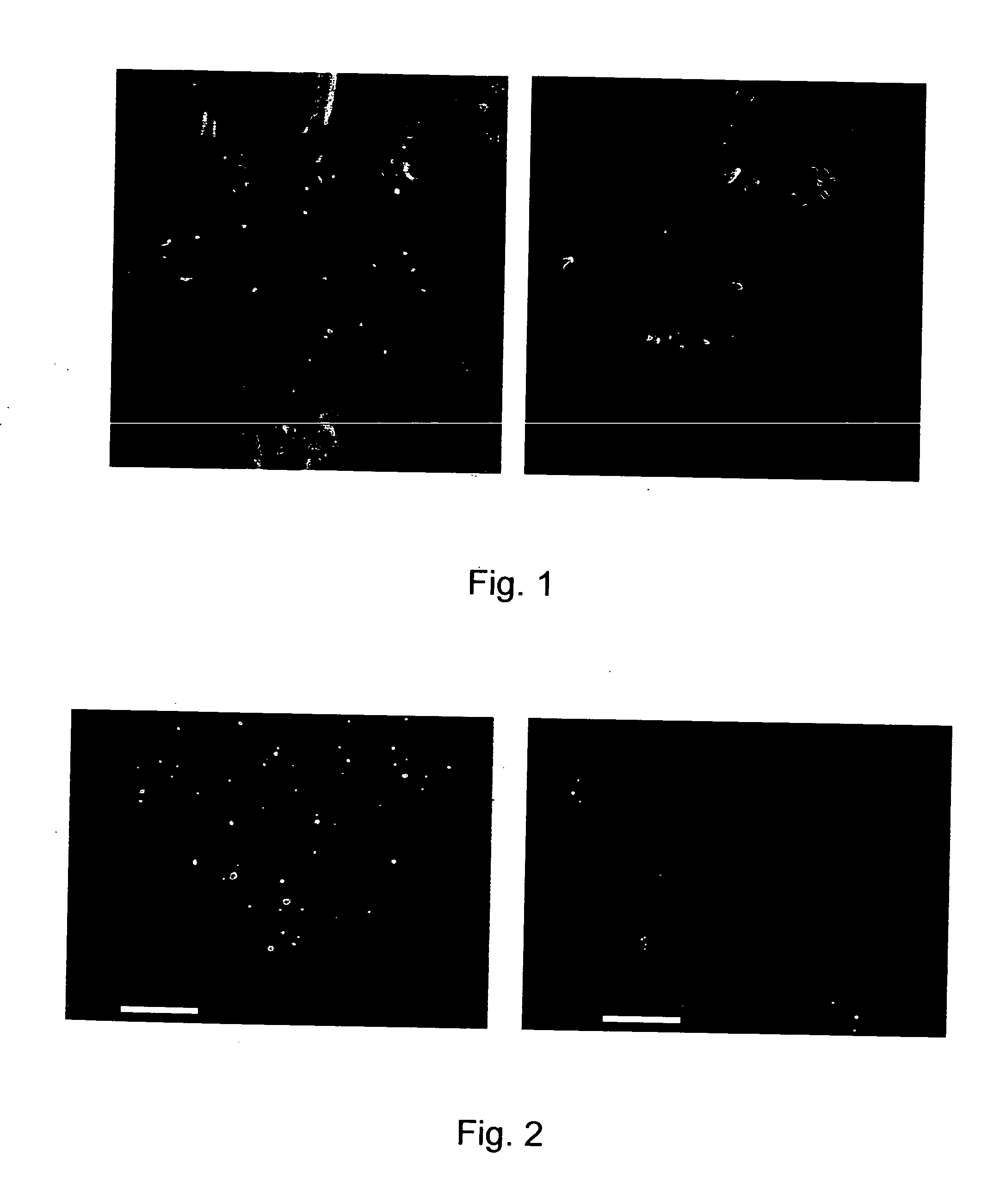Tumor targeting drug-loaded particles
a drug-loaded particle and tumor technology, applied in the direction of biocide, heterocyclic compound active ingredients, microcapsules, etc., can solve the problems of limiting its use, affecting the effect of drug delivery, and requiring hospitalization for intraperitoneal administration,
- Summary
- Abstract
- Description
- Claims
- Application Information
AI Technical Summary
Problems solved by technology
Method used
Image
Examples
example 1
Identification of the Paclitaxel Concentration and Treatment Duration that is Active Against Human Tumor Cells
[0138] The present invention describes the methods for designing and the compositions of paclitaxel-loaded particles that release cytotoxic levels of paclitaxel over durations that are sufficient to cause cytotoxicity. This example identifies the paclitaxel concentrations and treatment durations that are effective against human tumor cells.
[0139] Applicants evaluated the cytotoxicity of paclitaxel (dissolved in water, 96 hour treatment) in three human pancreatic cancer cells (PANC1, MIA-PaCa and Hs766T) and in human bladder RT4 tumor cells. Drug effect was measured using the microtetrazolium dye reduction (MTT) assay. The respective concentrations that are required to produce 50% cytotoxicity (IC50) in these cells were 1.5, 0.7, 0.7 nM. These IC50 values are comparable to the IC50 of paclitaxel in human breast MCF7 and ovarian SKOV3 cancer cells (Au, et al., Cancer Res., 5...
example 2
Establishment of Human Pancreatic and Ovarian Xenograft Tumor Models to Test the Efficacy of Paclitaxel-Loaded Microparticles
[0140] This example demonstrates the establishment of peritoneal tumor models for testing the efficacy of paclitaxel-loaded microparticles.
[0141] Applicants used human pancreatic Hs766T cells derived from a lymph node metastasis to establish orthotopic and intraperitoneal tumors in athymic mice. For orthotopical model, 2×106 tumor cells were implanted orthotopically into the body of the pancreas. Tumors were established after 2-3 weeks (˜1.5 cm to ˜2 cm in diameter). For intraperitoneal tumors, Applicants established a metastatic subline by serial re-implantation of cells collected from peritoneal washings of mice given IP injections of Hs766T cells. Re-implantation of the metastatic Hs766T cells IP in 6-week old female Balb / c mice resulted in progressive tumor spread throughout the peritoneal cavity. After 2-3 weeks, tumor nodules of ˜1 cm to ˜1.5 cm diamet...
example 3
Identifying the Effects of PLGA Microparticle Properties on their Distribution and Retention in Peritoneal Cavity
[0144] This invention discloses the compositions of drug-loaded PLGA particles that target peritoneal tumors. This example demonstrates the effects of different properties of PLGA microparticles on the distribution and retention of microparticles in peritoneal cavity, to aid the identification of the PLGA microparticles with the desired retention and distribution characteristics. Examples 4 through 6 describe the preparation and application of such drug-loaded PLGA microparticles, using paclitaxel, a widely used anticancer drug, as an example.
[0145] Effect of PLGA microparticle size. Applicants compared the distribution of two microparticle preparations with different diameters, i.e., ˜3 and ˜30 μm, after intraperitoneal administration. These microparticles were loaded with acridine orange and, therefore, could be visualized under UV light. After 24 hours, mice were eut...
PUM
| Property | Measurement | Unit |
|---|---|---|
| diameter | aaaaa | aaaaa |
| diameter | aaaaa | aaaaa |
| diameter | aaaaa | aaaaa |
Abstract
Description
Claims
Application Information
 Login to View More
Login to View More - R&D
- Intellectual Property
- Life Sciences
- Materials
- Tech Scout
- Unparalleled Data Quality
- Higher Quality Content
- 60% Fewer Hallucinations
Browse by: Latest US Patents, China's latest patents, Technical Efficacy Thesaurus, Application Domain, Technology Topic, Popular Technical Reports.
© 2025 PatSnap. All rights reserved.Legal|Privacy policy|Modern Slavery Act Transparency Statement|Sitemap|About US| Contact US: help@patsnap.com

